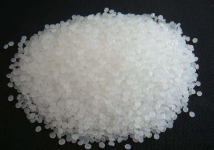read: 809 time:2025-07-03 15:03:44 from:化易天下
In the field of organic chemistry, understanding the basicity of heterocyclic compounds like pyridine and pyrrole is crucial for both academic studies and practical applications. A commonly asked question is: why pyridine is more basic than pyrrole? This article delves into the molecular structure, electronic configuration, and resonance effects to provide a comprehensive answer.
The basicity of a compound is primarily determined by the availability of a lone pair of electrons on the nitrogen atom for protonation. In pyridine, the nitrogen atom is sp2 hybridized, and its lone pair of electrons is in an sp2 orbital that is orthogonal to the π-electron system of the aromatic ring. This means that the lone pair on the nitrogen in pyridine is not delocalized into the ring and is readily available for protonation, making pyridine a stronger base.
In contrast, in pyrrole, the nitrogen atom is also sp2 hybridized, but its lone pair of electrons participates in the aromatic π-electron system, contributing to the stability of the aromatic ring. This delocalization reduces the availability of the lone pair for protonation, making pyrrole a much weaker base. This difference in electron availability is a key factor in answering why pyridine is more basic than pyrrole.
Resonance plays a significant role in the basicity of heterocyclic compounds. Pyrrole has a significant resonance stabilization because the nitrogen’s lone pair is part of the aromatic sextet, which is essential for maintaining the aromaticity of the ring. If pyrrole's nitrogen were to be protonated, the aromaticity would be lost, leading to a highly unfavorable situation. This loss of aromaticity upon protonation severely diminishes the basicity of pyrrole.
On the other hand, pyridine's resonance structure is different. The nitrogen's lone pair is not involved in the aromatic system, so protonation does not disrupt the aromaticity of the ring. This preservation of aromaticity upon protonation contributes to pyridine's higher basicity compared to pyrrole. Therefore, the resonance effects provide another layer of understanding in the context of why pyridine is more basic than pyrrole.
The inductive effect also influences the basicity of these compounds. In pyridine, the nitrogen atom is part of an sp2 hybridized ring structure, which slightly withdraws electron density from the nitrogen due to the electronegativity of the carbon atoms in the ring. However, since the lone pair is not involved in the ring’s π-system, this effect is relatively minor compared to the influence of electron availability and resonance.
In pyrrole, the nitrogen's sp2 hybridization and its involvement in the π-system mean that any inductive withdrawal is compounded by the delocalization of the lone pair, making the nitrogen less nucleophilic and thus less basic. This combined effect of hybridization and inductive withdrawal further explains why pyrrole is significantly less basic than pyridine.
In summary, the question why pyridine is more basic than pyrrole can be answered by examining the electron availability, resonance effects, and hybridization of these molecules. Pyridine's nitrogen lone pair is more available for protonation because it is not delocalized into the aromatic ring, and its resonance structure does not involve the lone pair, preserving aromaticity upon protonation. In contrast, pyrrole's lone pair is crucial to maintaining its aromaticity, making it less available for protonation and thus much less basic. Understanding these factors provides a detailed explanation for the difference in basicity between pyridine and pyrrole.

Jincheng Petrochemical's 300000 ton polypropylene plant successfully trial production, 2024 polypropylene market analysis

The ABS market remains sluggish, what is the future direction?

Market differentiation of bisphenol A intensifies: prices rise in East China, while prices generally decline in other regions

The production method and process flow of silicone acrylic lotion, and what are the common raw materials